|
In my early free-wheeling days, I was the proud owner of five bicycles. My first bike was an old derelict rust-sprocket, another was a slightly used one-owner, and the other three came new right out of the box. Each bike, in its time, became the best bicycle in the whole wide world. But in a truth that showed up much later, the only bike that really mattered was the second one.
In 1954, my parents, sister and I moved to the sleepy town of Port Richey, on Florida’s West Coast. Our little “cracker” house sat back off the road near woods thick with saw palmetto and pine trees. One day, while deep in those woods scouting for a place to build a fort, I found an abandoned bicycle. That old clunker with coaster brakes became my first best bike. The reluctant coaster carried me wherever I needed to go, but, in time, I began to suspect that it was out to get me. While rolling down the road, its rusty brakes had a nasty habit of locking up and once even tossed me over the handle-bars. After I came home with gravel embedded in my palms, my father took pity and gifted me with a brand new bicycle from the Western Auto store; a black three-speed Western Flyer with hand brakes. It felt like my birthday and Christmas rolled into one awesome gift. I couldn’t wait to take the Flyer out for a spin. As I raced away on the Black Beauty, Dad called out with some prophetic advice, “Have fun! Don’t do anything stupid!” I decided then and there that the Western Flyer must be the coolest bike in all of Florida. And in my little boy brain, I, naturally, became the coolest kid. The Flyer and I became inseparable. Together, we explored anywhere that two wheels could take us –fish camps, abandoned orange groves or mysterious hidden sink-holes. But in the following months, I forgot all about my father’s advice and committed what I not so lovingly call the Three Stupids, a trio of events that ultimately ended my love affair for the Flyer. Stupid Number One happened at New Port Richey’s annual Chasco Fiesta Festival. That year, Festival organizers decided a bicycle race would be just the ticket to get children more involved in the celebration. The one mile course around downtown’s Orange Lake brought out all makes of kids and bicycles. There were tough orange grove boys and sun-burned fishermen’s sons. There were older kids and friends my own age. And all their bikes were the single speed hand-me-down type. Waiting at the starting line and astride the Western Flyer, I sized up the rag-tag competition. In my mind they did not have a chance. Leaning over, I whispered to the Flyer, “They will eat our dust!” Visions of the award ceremony flashed through my mini-mind: The lovely Miss Chasco Fiesta giving me a big kiss at the finish line. Mayor Potter, smiling real big and handing me first prize- two tickets to the Vogue Theatre. When all the riders were lined up, straight and proper, and with a crowd looking on in anticipation, the Mayor signaled for quiet. He raised his special cow bell. “OK riders! Good luck! Now, get ready! Get set!” Then ringing his bell with great gusto, Mayor Potter shouted, “Go!” And we were off. As I expected, the Flyer and I raced out well ahead of the pack. By the quarter mile mark, we had a twenty-five yard lead on the clunker bikes. The Black Beauty sliced through the humid air, on our way to certain victory. Halfway around Orange Lake, the Flyer continued to perform flawlessly. Its overweight rider, however, did not. My lungs burned. My stomach tied in knots. My muscles screamed in protest. Glancing over my shoulder, I could see that we were in trouble. “Come on Beauty! They’re gaining on us!” But try as I may, I could not summon the strength. By the three quarters mark, I doubled over, like a beached whale gasping for air. And one by one, the other bikers caught up to me and zipped past. I was powerless to do a thing about it. Somewhat later, I managed to wobble across the finish line, exhausted, humiliated and dead last. Stupid Number Two rolled around the next month. Several friends and I planned to ride our bikes to the Highway 19 Bridge over the Pithlachascotee River and back, a distance of six miles. Not learning anything from my Stupid Number One experience, I gloated as my buddies checked out the Flyer. “Go ahead, you can touch it!” But fate intervened once again. My best friend, Eddie Lees, came riding up on his own new bicycle. Eddie’s bike was no ordinary Western Auto bicycle, but a sleek ten-speed Austrian racer. The other boys stared wide-eyed at its silver finish, chrome tool kit and mounted tire pump. Eddie even let them ride it. I distinctly remember getting red faced in anger and embarrassment. I wanted to run away and hide, but that would have exposed me as a big weenie. Silent and seething, I took my place in line for the River trip, once again, dead last. By the end of Summer, when Stupid Number Three happened, the Western Flyer had lost its coolness. I stopped riding it as much and in my neglect I got careless. One day after school, instead of locking the bike up, I leaned it against a tree by our garage. That night someone stole the Flyer and, secretly I was relieved. Now I had no bike that others could be compared to. Weeks later, the dented and dirty Flyer turned up in a field, but it didn’t matter. By then, the beat-up bike meant nothing to me. I had moved on to the next love of my life – Little League Baseball. “I’m a natural left-hander,” I boasted to team-mates. “I’ll be the best first baseman ever!” The rejected Western Flyer sat rusting under a tree, then got pushed behind the garage and forgotten. A year later, when we moved to Clearwater, the bike remained behind, another victim of a young boy’s fickle fancy. I did not own another bicycle until after college. With money saved from my first real job, I bought bicycle number three, a chrome yellow Schwinn. The ten-speed racer weighed just twenty pounds and carried me over the many hills and dales of Atlanta. Later, I purchased my fourth bike, a fancy twelve-speed Japanese touring bike. The black Takara provided many years of pleasure and eventually moved with me back to Florida. But riding the Sunshine State’s flat highways grew boring and getting run off the road by crazed snowbirds proved downright dangerous. Older and I believed wiser, I sold the Takara to a neighborhood teenager. Years later, I ended up with bicycle number five, a bilious green AMF, a “gift” from my next door neighbor. I rode the undersize thing for awhile, but my knees kept whacking the handle-bars. Later, I gave my last bike to my landlord’s son, Andrew. One afternoon, the three of us sat in the yard talking, when the subject of our all time favorite things came up. “Do you remember your very first bike?” Andrew asked. “Sure, I remember all five of my bicycles,” I answered, “but let me tell you about the second one.” Pausing for a moment, I recalled the shiny black Western Flyer: seeing it for the first time at the Western Auto store, my father’s pride as he handed it over, and the many pleasures the bike brought a young boy. I even remembered the Three Stupids and, smiling at the memories and lessons learned, I finally realized the truth. “That Western Flyer was the best bicycle I ever owned.”
0 Comments
Long ago, a man named Viktor Kovac lived in Romania. Viktor had a little garden behind his house. There he grew big turnips and even bigger beets. His wife Velma sold their vegetables in the village. The Kovacs led a simple life. But that was about to change.
After the turnip harvest, Mr. Kovac was so tired. “Velma, let me sleep until summer.” “No Viktor, we are going on a picnic.” “A picnic? Where?” “We are going to Cosmin Forest.” Viktor heard scary stories about Cosmin Forest. Monsters lived there. “People go in and are not coming out,” he whispered. “Such nonsense!” laughed Mrs. Kovac. After a long hike, the couple came to a meadow. Mr. Kovac spread out a blanket. Mrs. Kovac unpacked delicious food. Eggplants, cabbage rolls and chicken fritters. “I make gogosi for dessert,” she smiled. Mr. Kovac ate a turnip sandwich with relish. All at once, they heard crying. “W-h-a-t was that?” said Mr. Kovac. “It comes from the Forest,” said Mrs. Kovac. “Let us go see.” “N-o-o! You go!” said Mr. Kovac. Mrs. Kovac dragged her husband into Cosmin Forest. The crying got louder. “It sounds like a baby,” said Mrs. Kovac. “Or a m-m-monster!” added Mr. Kovac. Soon the couple came to a bushy bush. The crying was even louder. “Velma, look behind that bush,” whispered Mr. Kovac. “No Viktor, you look!” They both looked. And what do you think they found? There in a basket lay a beautiful baby. The baby looked up at the Kovacs. A smile spread across his little round face. “Who leaves a baby in Cosmin Forest?” said Mrs. Kovac. The Kovacs carried the baby home. They took him to the village. No one knew about a baby. The Kovacs decided to raise him themselves. “Such a happy dumpling,” said Mrs. Kovac. “We will name him Radu,” said Mr. Kovac. The next day, nosy Mrs. Gall came calling. The Kovacs showed her their new baby. Radu’s thick black hair surprised Mrs. Gall. His dark eyes scared her. She left in a hurry. Mrs. Gall told Postman Prattle. “Radu’s eyes are black like night. His hair thick like fur.” Postman Prattle told Mr. Blabber. “The Kovacs found a furry baby in Cosmin Forest.” Mr. Blabber’s eyes got big. Mr. Blabber told Miss Tattle. “The Kovacs captured a forest creature.” Miss Tattle told more people. The story spread all over the village. “A monster is hiding at the Kovacs'!” The stories about Cosmin Forest were true. People were afraid. That night, villagers took up torches. They marched past Inspector Jabber’s office. “What is going on?” he demanded. “A hideous beast has captured the Kovacs!” “I will investigate! Follow me!” shouted the Inspector. The road was filled with angry villagers. Soon they arrived at the Kovac’s house. “Come out monster!” they shouted. Mrs. Kovac peeked out a window. “Oh my! The entire village is in our yard!” “And they are not happy,” said Mr. Kovac “Viktor, go see what they want!” “No Velma, you go!” The Kovacs both walked outside. “A monster is hiding here!” said Inspector Jabber. “I must search inside!” The Kovacs looked at the Inspector. They looked at each other. “Come, I show you something,” said Mrs. Kovac. Everyone followed her into the house. Mrs. Kovac tiptoed to the bedroom. Ever so gently, she opened the door. Inspector Jabber peeked inside. In the corner sat a little wicker crib. And inside the crib lay a sleeping baby. It was no terrible monster at all. It was Radu, the Kovac’s beautiful forest baby. Saturday April 30 I climbed out of my slumber pod this morning and my trusty companion Moon Doggie was waiting for me and I said Captain Cosmos Is Hungry and then we teleported down to the Galaxy Star Base eating area and Mog the robot cook asked what I wanted for breakfast and I said Captain Cosmos Wants Moon Muffins With Jupiter Jelly and Mog answered I Am Here To Serve You and after breakfast it was time for my next space assignment which was to recover the priceless Orb of Neptune from the space villain Spastic Noggin who stole the Orb from Earth twelve eons ago but before we could reach the rocket launch pad a Martian Mud Monster started chasing us and would have caught us too except I threw out a bunch of Pluto Puffs and the Monster stopped to eat them and after that me and Moon Doggie climbed on board the hypersonic Astro Flyer but before we could take off a Two Legged Pouch Dragon blocked our way until I pointed my laser cannon at him and yelled I Am Captain Cosmos Out Of My Way and then the Dragon got scared and fell into some Lunaberry Bushes and after that we blasted off into the Ionosphere but waiting there was an angry Terrordactyl that tried to bite the Astro Flyer in half but I zapped it with my gamma ray gun and after that we landed on Planet Pistachio where evil Spastic Noggin held the awesome Orb of Neptune but first we had to search the hot and sticky planet until Moon Doggie spotted a gigantic cave and we walked and walked and then came to Noggins secret hideout and I didnt even knock but busted inside and standing there was Spastic Noggin his self and I shouted I Am Captain Cosmos Give Me The Orb Of Neptune Or I Will Vaporize You and Noggin had no choice but to hand it over and then the fantastic Orb was safe and sound and then we walked back to the Astro Flyer and I shouted at the sky Captain Cosmos Has Solved Another Case and after that me and Moon Doggie blasted off for Galaxy Star Base and when we got back there was a Welcome Home Captain Cosmos Party with hundreds of Fans Of Captain Cosmos all clapping and cheering The End In 1948 my family loaded up our old Chevrolet and headed south to Florida. My mother had grown weary of West Virginia’s gray and dreary winters. So, without hesitation, we followed my aunt and uncle to Tampa, where my father landed a job with the Tampa Times newspaper.
Restless again a few years later, we moved a few miles north to Port Richey on the Gulf Coast. Progress had just begun its march up U.S. Highway 19 from neighboring Pinellas County. Brightly colored billboards shouted- “New Jim Walter Homes From $8,900!” and “Own A Choice Florida Home Site, Only $149 Down!” Semi-rural Port Richey featured just enough modern amenities; a movie theatre, a five & dime and an ice-cream shop- an altogether awesome place to be a kid. And for boys with time on their hands, the piney woods east of town promised excellent adventures. Early one summer morning, the Semago brothers, Bim and Mike, came tapping on my window. They were going fishing at a newly discovered lake. Did I want to come along? They did not have to ask twice. I dressed quickly, grabbed a banana and took out after them. We rode our bikes for a couple of miles, then hid them behind a stack of bulldozed trees. From there we hiked another quarter mile on “POSTED: KEEP OUT” land. The sinkhole lake lay wedged between an abandoned orange grove and shirt-shredding saw palmetto thickets. I had no desire to fish but the opportunity to explore suited me fine. So, while the brothers cast their lines on one side, I set out for parts unknown. Following the lake’s edge, I came to an area overgrown with bushes, vines and scrub oaks. The mass of vegetation merged with all kinds of weird looking water plants. The bushes were so thick in places they hid the water from view- wild Florida at its most pristine. I stopped for a moment, taking in the tropical beauty. Then turning to leave, I caught a rippling movement in the reeds at water’s edge. “Must be a turtle or fish.” I edged closer for a better look. Suddenly, something huge splashed toward the undergrowth. But not before I caught a glimpse of a great gnarly monster. It was Alligator mississippiensis, a real live Florida gator and the biggest one I’d ever seen. Truthfully, it was the only one I’d ever seen. I raced back to share the exciting news with Bim and Mike. We quickly hatched a plan to flush the giant reptile from its hidey-hole. Maybe even capture it. As one might expect when young boys get together, our naiveté far exceeded common sense. Mike and I headed back to the other side, making a wide detour so as not to spook the beast. Sneaking in from behind, we tip-toed as close to the water as we dared. Then on signal, we started yelling and throwing stuff into the bushes. In a flash, the prehistoric saurian burst from its lair and made a swimming dash across the lake. And there waited intrepid Bim and his trusty Shakespeare rod and reel. Mike and I continued whooping and throwing stuff as we circled back around the lake. We got there just as Bim cast his line in the general direction of the spooked gator. One, two times he cast and came up empty. But on the third toss, Bim hooked the gator in a soft body part. There followed much thrashing, tugging and yelling. I’m not exactly sure how but we managed to haul the infuriated creature onto dry land. Crazy Mike quickly pounced on the gator and wrapped his t-shirt around its lethal snout. Only then were we able to relax and take stock of our captured quarry. Right away we realized that my guesstimate of the critter’s length completely lacked merit. Not ten feet long or eight feet or even six, the gator looked closer to three feet. We had captured an irate baby alligator. And now that we had captured little Bone Crusher, what in the world were we supposed to do with it? We all agreed that it wouldn’t be right to simply let it go. Mike, still holding the beast down and under the influence of some kind of juvenile machismo, shouted, “Let’s take it home!” Bim and I agreed because to do otherwise would have exposed us as big weenies. We then secured the angry gator with another shirt and stuffed it into Bim’s bicycle basket. With Mike riding side-saddle to control the thrashing tail, Bim set out on a tense and wobbly ride back to my house. I had raced ahead to prepare a holding area for our reptilian guest, a water filled galvanized tub. The brothers wrestled the gator to the ground and dumped it into the tub. Once unconstrained and back in its watery domain, the gator relaxed and sank to the bottom with its serrated tail hanging over the side. The creature continued to fix us with an unblinking glare of primeval nastiness. My mother, hearing the commotion, came outside to investigate. One look at the submerged reptile and Mom lost it. “Get rid of that thing this minute! Get rid of it! Get rid of it!” We tried our best to convince her of the coolness of having an alligator for a pet. And in so doing we momentarily took our eyes off our “docile” prize. It was an altogether unwise mistake. Seizing the opportunity, Mr. Nasty, lunged from his watery impoundment and chomped down on Bim’s soggy pants leg. And, just like in those Tarzan movies, the crazed thing began turning and turning in the gator death roll. Mom screamed bloody murder, while Bim, bug-eyed in terror, raced wildly around the yard with an alligator latched onto his pants. The spectacle’s sheer lunacy played out like a Saturday morning cartoon. Mike and I stood transfixed, our mouths hanging open. It finally fell to us two brave hearts to save the day. After much chasing and hysterical laughter, we were able to corral the creature and secure it in the bicycle basket. Why, I’ll never know, but instead of returning to the lake, we not so bright hunters carried the gator three miles into New Port Richey. There, under the cover of darkness, we released it into Orange Lake. That bone-headed decision soon upset the Lake’s precarious balance. Muscovy and Mallard ducks, frogs, fish and at least one small dog inexplicably went missing. Of course, me and the Semago brothers never breathed a word. We had made a spit-in-the-hand oath to never ever tell anyone what happened. I don’t know what happened to the Semago brothers or that gator but for sixty-five years I lived up to my part of the oath…..until now. In 1950 my grandfather passed away and for the first time in her long life my grandmother found herself alone and in need of help. My dad, looking for an excuse to escape Florida’s heat, drove my mom, sister and I up to Virginia to stay with Grandmother Alice. The plan was to stay a couple of months and return to Florida in time for school.
My sister and I were sure we had been dropped down in a magical land of mist shrouded mountains, ‘hollers’ and for four months of the year, SNOW. For us flatlanders it proved to be a vacation wonderland. ‘A couple of months’ turned into a year, way too long for two kids to lay about. Some adults decided we ought to continue our formal education and the schooling would take place at Finney School, the local seat of learning. Our vacation was officially over. The faded old school was fascinating in its stark simplicity. Grades 1-6 were in one room and 7-12 in another one. The cavernous class rooms were heated by small fuel-oil stoves but the warmth never made it back to where I sat. With no running water or plumbing, trips to the water-pump or outhouse were, especially in winter, acts of shivering courage. With time on her hands, my mom signed up to be a substitute teacher in Russell County’s underserved areas. No teaching experience needed, just show up and manage to stay until two o’clock. Then one day someone didn’t show up and they asked Mom to sub at the most remote school in the county, Possum Hollow School. She kept me out of school that day to go with her. I believe it was to teach me another kind of lesson. Up a winding gravel road and wedged into a cleft sliced out of the mountain, Possum Hollow School made Finney School seem like a palace. Small, dark and cold, the school had seen much better days. I marveled that it somehow managed to stay upright. Mom and I sat alone for the longest time and she wondered out loud if students would show up at all. Children began to wander in until finally all eight desks were occupied and drawn close to the wood-burning stove. I saw no school bus or cars delivering students and it dawned on me that those kids had walked all the way. I don’t remember any of the schooling but the lunchtime has stayed with me all these years. I eagerly opened my lunch bag and surveyed what my mother had prepared- a peanut-butter and jelly sandwich, an apple and a carton of milk. Just before laying into the sandwich, I glanced around to see what other students were eating. Gathered around me were three of the saddest looking children I had ever seen. Two boys and a girl, perhaps brothers and sister. They were dressed in torn and faded clothes and in need of basic hygiene. The three stood staring at me, saying nothing and occasionally wiping their noses on tattered sleeves. What in the world was wrong with those kids? Then I realized they were not staring at me but at my lunch. They had no lunch boxes or paper bags and it hit me that those children had no lunches. Not one apple or piece of cornbread, nothing. I had no clue why but knew for certain I could not eat lunch while they ate nothing. I motioned for the three to come over and then divided the sandwich and apple into equal parts and gave it to them. With big smiles they wolfed down the food and finishing, turned and returned to their desks. I drank a carton of milk for lunch that day. My visit to Possum Hollow School was the first time I ever witnessed poverty or even knew about poor folks. I never once thought about my grandmother or people in the valley being poor. It was simply the way they lived. The gut-wrenching poverty of families like those in the ‘hollers’ taught me a lesson I never forgot. Whenever possible, help a neighbor out. Last Friday for a large part of the day I got to hang out in the Imaging Center of Moffitt Cancer Center in Tampa. I had come with a friend who was scheduled for two MRIs. Anticipating a long wait, I made sure to bring along plenty of snacks, some illustrator pens and a well-worn sketchbook.
The waiting area filled up quickly with mostly older couples who busied themselves reading, texting, watching tv and in one case, knitting. Then a young Spanish family sitting in the corner caught my eye. A thirty something husband and wife with two children, I figured they were waiting on an older relative, perhaps their abuela. I was surprised later when an assistant called the husband in for an MRI. And shortly after that my friend got called in for her own tests. Faced with several hours of wait time, I settled in as best I could, took out my sketchbook and began to draw. It didn’t take long before the two children took notice. They stopped chattering, put down their I-pad and began staring at me. The longer I drew the more curious they became until presently, the brother, the bolder of the two, moved to a closer chair with his sister soon following. As I continued drawing, their curiosity could not be contained. In order to get closer, they soon took seats directly across from me. I kept drawing for a while longer until growing hungry; I closed the sketchbook and thought about checking out the Center café. The children’s smiles changed my mind and on a whim I held out the sketchbook to them. “Would you like to see my drawings?” “Oh yes!” answered the brother and he and his surprised sister thus began a delightful journey of discovery through a year’s worth of my sketches. When one or the other came upon a drawing they especially liked, the sketchbook was held up for their mother to see. And with that unusual introduction, all of our imposed reservations soon evaporated. The boy asked if I was an artist. Did I go to university? He told me that his mother’s brother painted pictures and he and his sister once took an art course back home in Puerto Rico. And now encouraged, I began asking my own questions. What were their names? Were they visiting Florida on holiday? Had they gone to Disney World? The sister, Malaria, spoke little English so younger brother Gariel became translator for both of us. They were refugees from Hurricane Maria and had come to Moffitt from the little town of Trenton west of Gainesville. Before that they stayed for a while in Ocala and before that Orlando. They liked Florida but were eager to go back home. At that point, Malaria retrieved her I-pad and with new found courage began using the pad to ask questions. “Do you draw the colors? Do also you paint the pictures?” Through the genius of technology I showed this inquisitive girl my web site and videos. As image after image scrolled across the screen, Malaria and Gariel became more excited, pointing at their favorites and holding up the I-pad again for their mother to see. Now she too seemed more relaxed and after a while joined in the conversation. Finally I felt comfortable enough to ask a question that had been on my mind. “Is your husband ok?” She spoke at length to Gariel, who then turned to me and repeated one word, “Tumor.” His mother pointed at her head and nodded when I asked, “Brain tumor?” In the most convincing voice I could muster, I told her that her husband was in the very best medical facility and not to worry, he would be fine. The conversation trailed off after that and all of us sat in silence. When their father finished his MRI and returned, Malaria and Gariel were quick to show him my sketchbook, occasionally stopping to point at me. As they turned the pages together, I marveled at how, for a short time, art had been able to bring strangers together. That refugee family had been through so much sadness, yet I could see what a strong bond of love they had for each other. Would Malaria and Gariel still have their father’s guidance as they faced the difficult task of growing up? Would his wife have the privilege of growing old with her loved one by her side? Their long ordeal over, the family gathered their belongings and prepared to leave. A sadness swept over me and I searched for comforting words to say before they drove back home. No words came. As they filed past, Gariel handed me a candy cane and smiling, wished me a Merry Christmas. Malaria and their mother and father smiled and also wished me a Merry Christmas. And then they were gone. Once in Africa there was a little dung beetle. This industrious beetle lived near some elephants. The big animals always produced lots of dung.
The beetle rolled the dung back to its home. It rolled and rolled and rolled. And after many weeks, it had a great pile of dung. The other beetles were envious of the little beetle. “He always gets the best dung,” they said. “And he leaves nothing for us.” During the dry season, the pond dried up. The elephants moved away to find water. The beetles went to see the little beetle. “We don’t have enough dung for the winter.” “Please, may we have some of yours?” The little beetle stopped stacking dung. “You should have collected more. I only have enough for my family.” The beetles went away empty handed. During the rainy season, it rained very hard. Raging floods washed away the beetle’s dung supply. “Woe is me! What will happen to my family!” It went to see its beetle neighbors. “Please, may I have some of your dung?” “We only have inferior lion dung. But you are welcome to some.” The little beetle had dung for the winter. In spring the pond filled with water again. And this time, many elephants returned. Soon, there was enough dung for everyone. Once a homeless cat gave birth to twins under an abandoned house. The kittens were so much alike that only a mother could tell them apart. Unfortunately, the kittens’ mother deserted them and they had to fend for themselves.
The kittens looked identical but they acted the exact opposite. One kitten liked to get out and explore the neighborhood. It always found interesting tidbits to see or smell or eat. The other kitten was much too timid to venture out. It relied on its brother to provide food and warn of danger. One day the curious kitten wandered into the yard of an elderly man. It walked right up to him and began to meow. The kind man put out food for the kitten and provided a bed on his carport. Later, he brought the kitten inside and fed and sheltered it. The kitten grew into a beautiful healthy cat with everything a cat needed, love, companionship, food, toys and a nice bed. But it never went outside again. The scaredy-cat kitten eventually ventured out but always stayed close to its familiar under house home. It grew by starts and stops and any morsel of food it could catch or steal. It huddled by hot water pipes in the winter and slept by a.c. coolant lines in the summer. The kitten kept an eye out year around for neighborhood dogs and cats. And it never got to live inside. So which of these two cats, do you think, had more freedom? The inside cat that would never get to chase lizards or smell wildflowers or stay up all night if it wanted to? Or the outside cat that would never have too much to eat or have a companion who gave it a lifetime of love and protection? Recently I gave a talk about my art in connection with an exhibition at Hillsborough Community College in Tampa. Afterwards visitors asked general questions about my process, about materials and inspiration. Near the end of the evening, an art student approached me with what turned out to be the most important question. Important because it gave me pause and continues to perplex.
How, she asked, would I respond to certain people who might charge that I am appropriating important and even sacred cultural symbols and beliefs. The question caught me off guard and I’m afraid my answer might not have been satisfactory. I told her that artists down the ages have sampled ideas and images from other cultures. Their appropriations were deemed valid because under the artists’ creative influences the images became part of unique new art works. Picasso, van Gogh, and Gauguin, in particular, were adept at re-interpreting ‘foreign’ artistic styles. The student’s question may have been in reference to a piece in the exhibition titled “Singing The World.” The title is based on an Australian native people’s story of how the world and everything in it were created. The painting features an image of a kangaroo and a style that harkens back to Aboriginal art. My intent is not to disrespect Aboriginal culture but to celebrate it and to do so in a way that is unique and true to my particular vision. And I believe the piece fits in seamlessly with the other works in the exhibition. I’m thankful the young woman asked me that question because it continues to bring up other questions. How would native Australians respond to “Singing The World”? Perhaps they would have no objections to it and could even come to celebrate the painting. Could it be that in modern society's rush to be politically correct, we simply reject that which we don't understand? I wonder. “What did you say? I can’t understand you. You’re mumbling again.
Oh, you want breakfast. Why didn’t you say so, instead of pacing back and forth like that. OK, you don’t have to get all pouty about it. I wish someone would wait on me like I wait on you. I’m really getting tired of it. Yeah, I know you can’t cook. Every day you remind me of it. And another thing, could you please stop making those noises when you eat. It’s irritating. Yes, I know about your condition. Just eat already, while I finish the laundry. OK, once again I can’t hear you. I’m in the laundry room. What? Yes, I fluff dried your precious pillow. You know, the next time you decide to get sick, just maybe be near the toilet like everyone else. This stain is just not coming out. No, I’m certainly not making light of your condition. I’m just saying….Now wait a minute, what’s my mother got to do with this? Well, how could she know you’re allergic to tuna? Why are you looking at me like that? Oh, so now it’s the silent treatment. Look, I’ve just about had it with you. I’m getting out of here for a while. All right, I thought that would get your attention. Where am I going? Where do I always go Tuesday afternoon? The grocery store of course. Oh, don’t start on that again. I did not forget you last week or the week before. OK, smart aleck, here’s the grocery list. What’s the very first item? That’s right, Kibbles! I rest my case!" Before computer and electronic games took over, boys of a certain age wanted only three things; a bicycle, a baseball glove or a BB gun. I was that kid and when I turned nine my father gave me the gift for which I had long pestered him- a Daisy pump-action 50 shot BB gun. His simple hand- written card read, “Aim high at the target of life.”
For the first week I practiced on tin cans and bottles until one day I was drawn across the road to the abandoned orange grove. Maybe there would be some leftover oranges I could shoot. About thirty yards from the nearest tree I noticed a rustling in the tall weeds and soon a covey of quail emerged. I doubted I could even shoot that far and without thinking raised the gun, sighted on the first quail and fired. To my horror I hit it. The injured bird leapt into the air but fell heavily back to earth. In a fit of pain, it ran in circles dragging its broken wing. Frightened and unsure what to do, I ran home and told my father. I expected to be punished and perhaps have the gun taken away. Instead my father stopped work and sat down beside me on the couch. He told me the quail would never be the same again. Unable to fly, it would be easy prey for a hawk or a cat. “You need to go back and put that bird out of its misery.” I ran from the house filled with anger and dismay. How could he say such a thing. Pacing back and forth in the yard, it finally dawned on me, I had no other choice. My anger now replaced by a gnawing dread, I picked up the gun and walked back to the orange grove. I prayed the quail was only dazed and had flown away. Or maybe it was already dead. Either event would have let me off the hook. But no such luck. Nearing the orange tree, I saw that it was still there, sitting quietly in the green shadows. At my approach, the quail roused itself, ran a short distance and stopped. It could not fly, that much was clear, but it was also very much alive. If I were to get a good shot, I would have to chase the bird down. And so I did, running through the orange grove after the quail, pumping the BB gun and firing away. In any other situation, it would have been a comical sight. But there in that moment, I felt like a bumbling shameful boy. After a half-dozen or so wild shots, I saw that some had hit home. The quail slowed considerably and once more began running in circles. This time I was able to come quite close to the injured bird. I pumped and fired again and again, now hitting it with every shot. But the quail would not die and could only flop about on the ground. I felt utterly alone and helpless. In such an agitated state, I remembered the big game hunter’s advice, “Always aim for the head." But with the bird’s flopping around, I knew that would be impossible. I had to find a way to hold the quail still. The poor creature, now oblivious to me, came quite close. In a rush, I knew what had to be done. Quickly I placed my foot on its quivering body, took aim and fired. And with tears streaming down my face, I fired again and again until the quail no longer moved. Then I turned, walked out of the grove and back to the house where my father waited. Without a word, I crossed the living room to the hall closet and placed the BB gun there. I never picked it up again. My father, Richard Gaston, was a mapmaker by trade and an artist by spirit. He loved Kandinsky, the German abstractionists and Surrealism. He considered himself a serious painter, but never made much money from his creations. In his life time he painted less than a hundred pieces.
If someone expressed interest in a painting, my father often gave it to them as a gift. For years I marked this down as a character flaw; the insecurity of a part-time painter. And it took years to realize my mistake. Recently, going through his things, I was surprised to discover a record of all his art work. The list, hand written in his distinctive style, began in the 1940's and included titles, dates, media, and prices. After some works were the names of people who had purchased them. There was a doctor, a printer, and several business associates. Other paintings were given as gifts and even bartered. I've come late to the realization that an artist's worth has little to do with their sales record, except in the market place. And the market place can be as insecure as a pampered Rock star. More important is the ability to see beyond the thing created and realize it does not define who we are. That is a good definition of an artist very secure in what they create. And it becomes another lesson given to me by my father. In 1951, after we moved back to Florida, my parents managed a motor-court on US 19 in what was then semi-rural Pasco County.
We were a bit isolated up there and always looked forward to going into New Port Richey or taking any kind of road trip. For that reason, during those years, Christmas took on extra special meaning. That was the day we all piled into the Chevy and drove down to my aunt and uncle’s home in Tampa. I still have fond memories of those times; exchanging presents, playing games with our cousins and, of course, enjoying lots of delicious food. But one of the highlights for me happened before we even arrived at my aunt and uncle’s. My father made a point of driving through the African American community in North Tampa near Nebraska Avenue. It seemed like the entire community had come outside and were celebrating in their front yards. Boys wearing cowboy hats and firing cap pistols or showing off new baseball gloves. Girls gathered on steps giggling and playing with dolls bigger than they were. And both girls and boys zipping up and down the street on shiny new bikes. We drove past block after block of people out and enjoying the special day. For a six year old, it was fascinating to watch and, I must admit, I was also a bit envious. I did not have a bicycle or a new baseball glove. In 1964, as it became apparent American kids would be going to Viet Nam, I made the easy decision to go to college instead. In the following weeks, I slogged through mind numbing courses on logic, calculus, and earth science, more than once wondering if I had made the right decision.
My first art class, Basics of Drawing, promised to be a piece of cake by comparison. After all, I had been drawing since first grade, so how hard could a beginning course be. There were seven of us in the class, all veterans of excellent high school art programs. Our smugness that first day lay thick like gesso. An air of superiority that lasted all trimester. Exercises on contour drawing, gesture drawing, value drawing, and shapes were no match for the Magnificent Seven. By trimesters end, all of us felt certain we had aced Basics of Drawing. But, instead of accolades, came the unwelcome news that there would be a final exam. After much rolling of eyes and grumbling, some decided it might be smart to hit the books the night before. Book knowledge, it turned out, would not prepare this group of over-achievers. Next day, Mrs. Bedeau, a no-nonsense and usually punctual woman, strode into class ten minutes late. And as if to heighten the growing suspense, she said nothing, but looked at each of us in turn. A faint smile crossed her face. “Your final exam today will be a drawing assignment.” Turning away from us, Mrs. Bedeau placed something carefully on the drawing stand. Then standing aside, she pointed down at the small object. “I want you to spend the entire two hours drawing this.” Before anyone could respond, she was out the door and gone. All of us moved in to get a better look at that mysterious object. We gazed in astonishment at that which would determine our final grade in Basics of Drawing. It was an egg. Mrs. Bedeau, in her wisdom, had picked the perfect object with which to deflate a group of art prima donnas. Designed by nature to make life easy on the hen, the egg is neither a circle nor an ellipse, but a combination of the two- a spheroid. I took one look at that little ovo and knew I was screwed. None of the failsafe methods we fell back on would suffice this time. Outlines would not work for there were no lines. Texture was nowhere to be found and contrast existed only as a subtle difference between egg-shell white and the off white drawing stand. I could not detect a single light source since the room was bathed in an irritating ambient glow. Nothing would do but to start all over, first by simply looking at the object, in this case an egg, in a new way. After a while, I began to notice minute tonal shifts on the egg’s surface. I found what I thought were the points where the circle and ellipse joined, the lightest area. And that is where I began drawing. Two hours later, my finished drawing looked stiff, awkward, and altogether un-egg like, but that was the exact moment when I began learning how to draw. The sound of crows sometimes takes me back in time to Russell County Virginia, 1950. A young boy is awakened by his mother well before dawn. Sleepiness soon gets pushed aside by his growing excitement. His uncle has come to take him squirrel hunting for the first time.
The pick-up bounces along dirt roads and stops across from a line of high ridges. The boy’s uncle reaches behind the seat and pulls out a rifle case. He unzips it and slides out the bolt-action 22. The smell of 3-in-1 Oil fills the truck. They walk in silence to a stand of trees below the ridge. His uncle has been here before and crouches behind a rock outcrop. They wait. Dawn is still an hour away and night seems to suffocate any desire to speak. The boy wonders why they’ve come so early. The whole woods are asleep and he wishes he were too. Above them the blackness begins to fade. The contour of trees becomes visible against a graying sky. His uncle raises a finger to his lips and points up the ridge. He lifts the 22 and releases the safety. The boy squints into the hazy light but sees nothing. He feels a rush of excitement as his uncle takes aim at a large oak. The crack of the 22 shatters the morning stillness. Its echo ricochets through the forest. The boy shudders. The smell of spent gunpowder fills the air. His uncle walks up the hill to the tree and reaches down. He returns, holding a dead squirrel for the boy to see. This is not what he expected. He feels no joy in looking at the lifeless animal. What started as an adventure leaves him sad and confused. They walk back down the hill to the truck. Dawn now gives detail to the forest, creek and bottom land. Their ancient beauty seems lost on the boy. Later, he will remember only one thing; calling down from the forest behind him, the sound of crows. Photograph courtesy of The Crowtographer / Twitter (c) Me and my sister were born in Beckley, West Virginia, a smallish berg southeast of Charleston down I-64. Perched right on top of a mountain, Beckley had fierce winters of wind and ice that made normal life most difficult.
My Mom’s sister, who had earlier moved to Tampa, kept telling her how great it was in the Sunshine State. And after slipping on ice one too many times, Mom said, “That’s it! We’re moving to Tampa!” Dad got a job selling eye glasses in an optometrist’s office but secretly aspired to bigger things. When he read in a trade journal about a managerial position in a North Dakota optometrist’s office, he jumped at the chance and sent in his resume….without telling Mom. Some weeks later Mom saw a letter addressed to Dad from Minot, North Dakota. Curious, she carefully opened it and was surprised to read that Dad had been offered the optometrist’s managerial job. Her surprise turned to irritation at not being consulted on such a major life style change. She had no intention of moving to a frozen wasteland after just moving to Florida. Mom tore up the acceptance letter and never told Dad about it until years later. Now, as I work from home in Coronavirus induced semi-isolation, my mind begins to wander and wander…all the way up to North Dakota. With only 10.7 folks per square mile, the Peace Garden State sounds like an ideal place to hunker down, make art and get my mind off pandemics. Just one thing, I wonder if they have baba ganoush up there? In 1980 my father, newly retired and with time on his hands, decided to become an urban farmer. After time researching at the library and going through seed catalogs, he decided to go the exotic route. Over the next few years, with varying results, he planted jicama, carambola, chayote, and sapodilla. He also planted a carrotwood and a silver oak tree.
Thirty years later I inherited the old homestead and a large yard in dire need of tender and not so tender loving care. The carrotwood and silver oak trees, in particular, needed my immediate attention. They had grown into green monsters that threatened to devour the back yard. My inquiries about them at the county horticultural office brought instant reprimand. “Those are opportunistic invasive trees from Australia. You should cut them down.” Their candid remarks were surprising and a bit irritating. After all my father’s and later my work, cutting down trees was not an option. I would revisit that decision many times in the following months. The carrotwood tree has proved to be a royal pain where I sit. A tropical evergreen, the tree was introduced to Florida in the 1950s as a decorative ornamental variety. Bad move indeed. The fast growing exotic produces tons of flowers and then tons of seeds. The seeds and seed casings end up on the lawn and are soon followed by a two week shower of dead leaves, a dry land deluge of epic proportions. Turns out the seasons down under are the opposite of Florida’s. Australia’s fall is our early summer, which means I must rake up all that @%^&%$*!! leaf litter in 90 degree heat and humidity. My father left me a lot for which I am grateful. An endless summer of windblown rained-on dun colored leaves is not one of them. Aussie go home! My 2018 Captain Marvel 16 month calendar just informed me that today, June 21, is the first official day of summer. Yeah right! Those of us who live in the Sunbaked State know better. What we call summer first arrives in these parts with the buzz of Cicadas and the low hum of countless air-conditioning units. And that would be sometime in May, depending on how close you live to the Coast.
Sitting in the cool comfort of this climate controlled home, it’s hard to remember a time without the miracle of air-conditioning. But such a time indeed existed in the sweltering Florida summers of my youth. We lived in an old rental house with few amenities and although public buildings and people of means enjoyed air-conditioning, we did not. Window-fans, wet towels and sweating were the methods we employed to make living a bit more tolerable. But sleeping in such hot and humid conditions became nigh impossible. Waking from nights of fitful sleep, I often discovered sheets and pillowcases as wet from sweat as I was. Something obviously had to be done. That’s when my resourceful father decided to put his inventive abilities to good use. He was, after all, a drop-out from Rutgers University’s Correspondence School of Engineering. Looking around with keen eye and mind, he hit on an idea to use three things we already possessed; window-fans, water and an abundance of Spanish moss hanging from backyard trees. As my sister and I watched in silent amusement, Dad affixed sturdy metal racks to the backs of each window-fan. Onto the racks he draped several layers of fresh Spanish moss after first removing any little bug critters lurking therein. Finally with everything in place, he let hoses trickle water down over the moss and turned on the fans. To our amazement and perhaps also to Dad’s, the contraptions worked. Air that the fans sucked into the house was cooler by several degrees, just enough to make living more pleasant and sleeping more peaceful. Dad’s cool invention never caught on but for a short time in 1956 his ‘air-conditioners’ were more important to us than the ones built by that other Florida inventor, John Gorrie. It’s hard to believe now but in my youth I moved many times; Virginia, West Virginia, Georgia and here in Florida, Tampa, Pasco County, Gainesville, Dunedin and Clearwater. And after every move, when everything had been put away nice and neat, there always remained an old cardboard box marked ‘miscellaneous.’
That box contained various knick-knacks and mementos, everything that would not fit neatly on a shelf or in a drawer; a glow-in-the-dark yo-yo, a Sal Maglie baseball autograph, a polished Chattahoochee River rock, a Jimi Hendrix concert ticket stub. Each one too important to toss, just not important enough for a special place in my new residence. The ‘misc.’ box remained stuck in a closet awaiting my next move, maybe in a couple years but sometimes sooner. That all changed ten years ago when I moved to this little Clearwater casa. Once and for all, I would find a place for those miscellaneous memories and if I couldn’t, then out they go. It took all day but I was finally able to throw away the box that had followed me for a large part of my life. There must be a metaphor here about moving from one part of life and into another. Yet, recently, I discovered that my ‘miscellaneous’ box is still with me but had only changed forms. Stuck at home for two months and in some kind of mental fit, I decided to clean out my computer hard drive. First I found one folder marked ‘misc.’ and then another and another. In the end there were five folders marked ‘misc.’; letters, recipes, ancient resumes, receipts, a photograph of a gorilla. I have no idea. It will take more than one day to find places for all these digital memories. Yesterday was the first day of my hoped for weekly “Day of No Thing”, twenty-four hours of self-imposed solitude. With the world pushing in on all sides and society making increasingly restrictive demands, a period of time-out became necessary, even longed for. Instead of giving in to commercial culture’s seductive demands, I allowed myself the luxury of not leaving the house all day except perhaps to enjoy a cup of tea in the back yard.
Marked more by what I did not accomplish than what I did, I found myself with blessed very little to do. No yard work, no house work, no bill paying or cooking. No phone calls, instant messages, e-mails or texts. No lunch dates, neighbor visits, television, Facebook or even answering the door. In this state of suspended world engagement, showers, shaving and dental hygiene became unnecessary. That is not to say I descended into stinky slothfulness because I continued to make my bed and wash the food bowl. And, of course, I attended to my two feline friends because not to do so would have marked me a cruel unfeeling oaf. I read and wrote, drew and painted, listened to music and enjoyed the excellent pastime of staring into space. Joining the cats in an afternoon siesta did not cause the least bit of guilt. In this blissful way, I passed the day in contentment with a full belly and rested brain. But oddly, by day’s end I had not physically recharged and lay exhausted like a beached whale. One could only conclude that some type of exercise is the fuel for physical stamina. Right then I decided that next week I will change my routine and add some exercise. I will pick up my socks or perhaps walk to the mail box. One day the Computer Keyboard Special Characters decided to hold their annual meeting. All the CKSC members were there; Comma, Asterisk and Ampersand, Colon and Semi-colon, Left and Right Bracket, Underscore, Backslash and Forward Slash, both Parentheses, etc. There were even some characters no one recognized. There was lots of talking and jostling for seats and Exclamation Point had to yell to call the meeting to order. And right away a problem arose. Vertical Bar, on the far right side, wanted to know why there were no Alt. Commands present. “This is discrimination! Alt. Commands represents a lot of special characters!” Everyone ignored Vertical Bar’s ranting and the meeting finally got underway. Because he was good at setting things off, Right Single Quotation Mark was the first to speak. “People keep getting me mixed up with Apostrophe and I'm sick and tired of it.” Some characters jeered and laughed out loud. “Can I quote you on that? quipped Asterisk. Next to speak was little Hyphen who had to practically shout just to be heard. “Just because I'm smaller than the Dashes doesn't mean I'm less important.” Then En-dash, who was an Alt Command, shouted from the back, “I’m longer than Hyphen! I’m longer than Hyphen!” “How did you get in here?” demanded At Sign. “Get out! Get out!” shouted Left and Right Brace. Then from somewhere far off came the distinguished voice of Em-dash, “Well, if truth be known…….” and he paused for effect, “I am quite a bit longer than both of you characters.” Caret and Grave Accent then piped up, “No one ever like us because we are foreign-born. But we are much important too.” Shouts of, “Go home! Go home!” were heard from both sides of the keyboard. When order was restored, Tilde, sitting alone in the corner, got up the nerve to speak. “I just want to s-s-ay,” she stammered, “well, uh, no one even knows what I do and I'm not really sure myself.” “Well then, why don’t you just leave!” Minus Sign called out. “I know exactly why I’m here!” shouted Greater Than symbol. “I am here because I’m greater than any of you!” And all the while, he stared directly at Less Than symbol, who quickly ran and hid inside Parentheses. Almost drowned out by the din, Question Mark wondered aloud, “Why oh why do we always end up fighting? Why? Why?” As if to bring attention to their predicament, Underscore spoke up. “Question Mark is right! Let’s all just chill out!” But none of the symbols was listening. All eyes were on Backslash, who had jumped up and started screaming at Forward Slash. "How come you're always the one who gets used in web addresses! I'm just as good as you!” Then Forward Slash, by now all keyed up, leaned forward and sneered at Backslash. “Because you are nothing but a backward far-left inconsequential minor character!” Backslash and Forward Slash then got in each others’ fonts. Full Stop tried to come between them but the two Slashes started a knock-down drag-out fight, trying their best to delete each other. When it was all over, Forward Slash and Backslash both had the wind knocked completely out of them. Their bellies were pushed so far in that they looked like Left and Right Parentheses. By then, complete chaos reigned on the keyboard. At that moment, Equal Sign rose to address the raucous assembly. “My friends and fellow characters, let us not debase ourselves with this constant partisan bickering. At heart, we really are all the same. Yes, we are special in our own ways, yet each of us has the ability to set our differences aside and work together for the greater good. And what is our greater good? It is nothing less than cooperative excellence in the art of clear and concise communication.” Just then, there was a great power surge and the computer blinked once and came crashing down. Sadly, no one had remembered to take minutes of the meeting and in the ensuing darkness, the special characters groped their way toward the exit. They had no recollection of what they had seen or heard or even why they were there. In the 1970's while working in Atlanta as a graphic designer, I decided to launch a greeting card company. Young and full of clever ideas, I named my fledgling company Bullfrog Press and got a printer friend to run off a batch of the six cards I had designed.
I then went into all of Atlanta's hip book stores and gift shops trying to place my awesome cards. Yet, in one store after another, I was met with icy stares and the same terse line, "We buy all our merchandise at the wholesale shows." It finally dawned on me that my sales plan was flawed. Instead of wearing myself out in the futile attempt of going from store to store, I needed to find a single distributor for my greeting card line. Luckily I found one such company in the Atlanta Merchandise Mart downtown and they agreed to take a look at my cards. After a quick perusal of my six cards, the owner looked at me, "These are great but where are your other ones?" On learning that I only had six cards, he took me over to a glass case. "These are the companies that you would be up against, American Greeting Cards and Recycled Paper Products each with dozens of cards in dozens of lines. Your six cards would be a most difficult sell." On seeing my crestfallen appearance, the owner smiled and agreed to give my cards a shot. "Your cards are quite good. Let's just hope they don't end up on the bottom of my salesmen's cases." Sadly, that is exactly what happened and the end of Bullfrog Press quickly followed. |
Denis Gaston
Writer, illustrator and designer. Archives
July 2022
Categories |
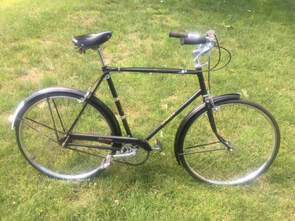
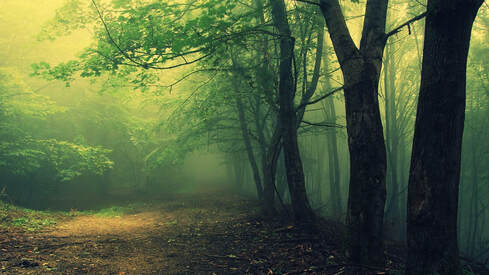
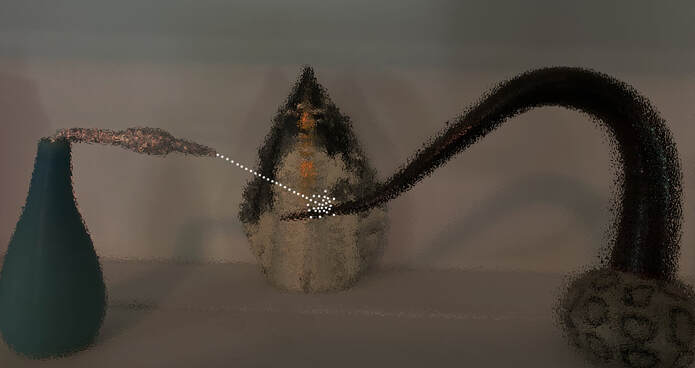

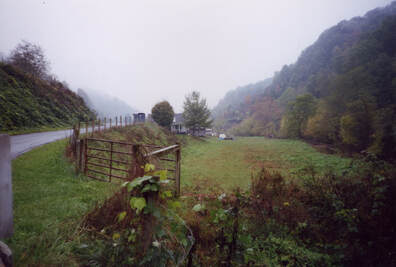
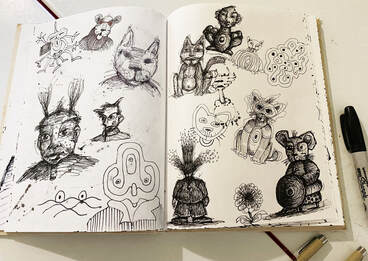
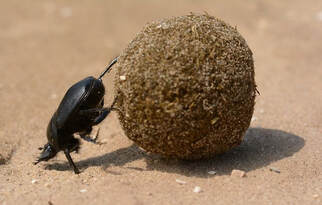
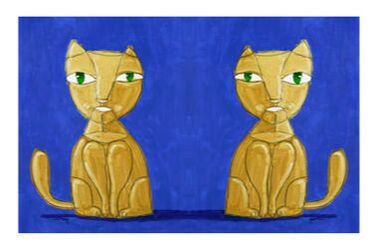
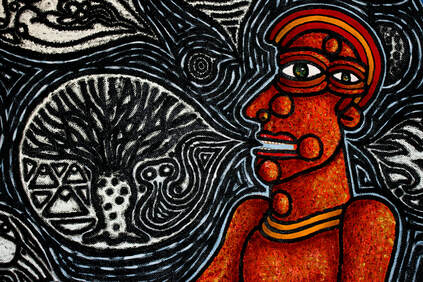
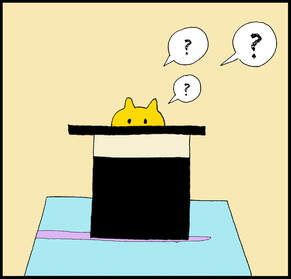
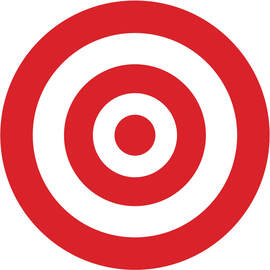
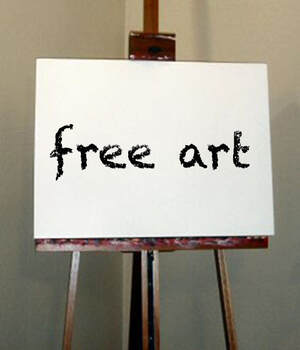
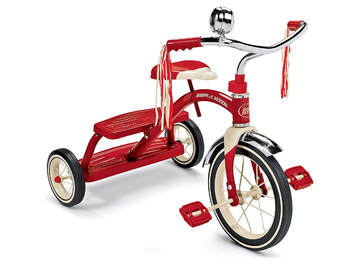
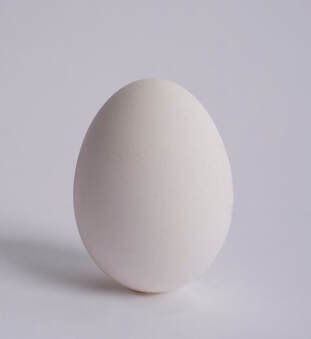
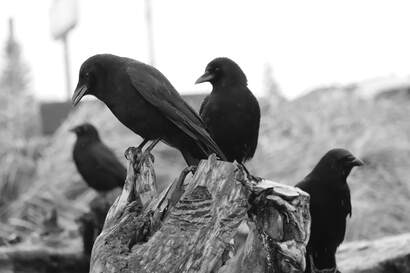
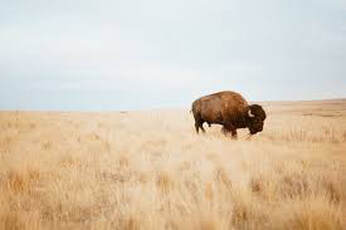
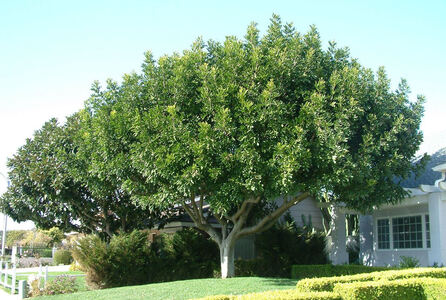
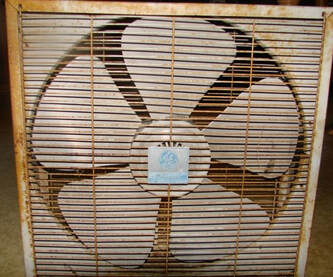
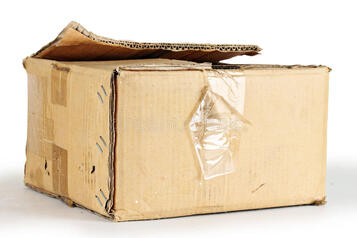
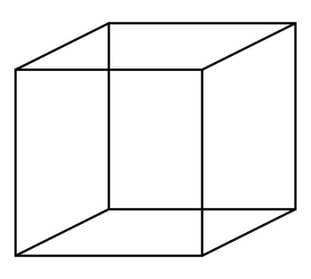

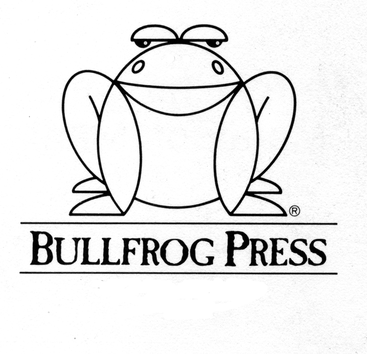


 RSS Feed
RSS Feed